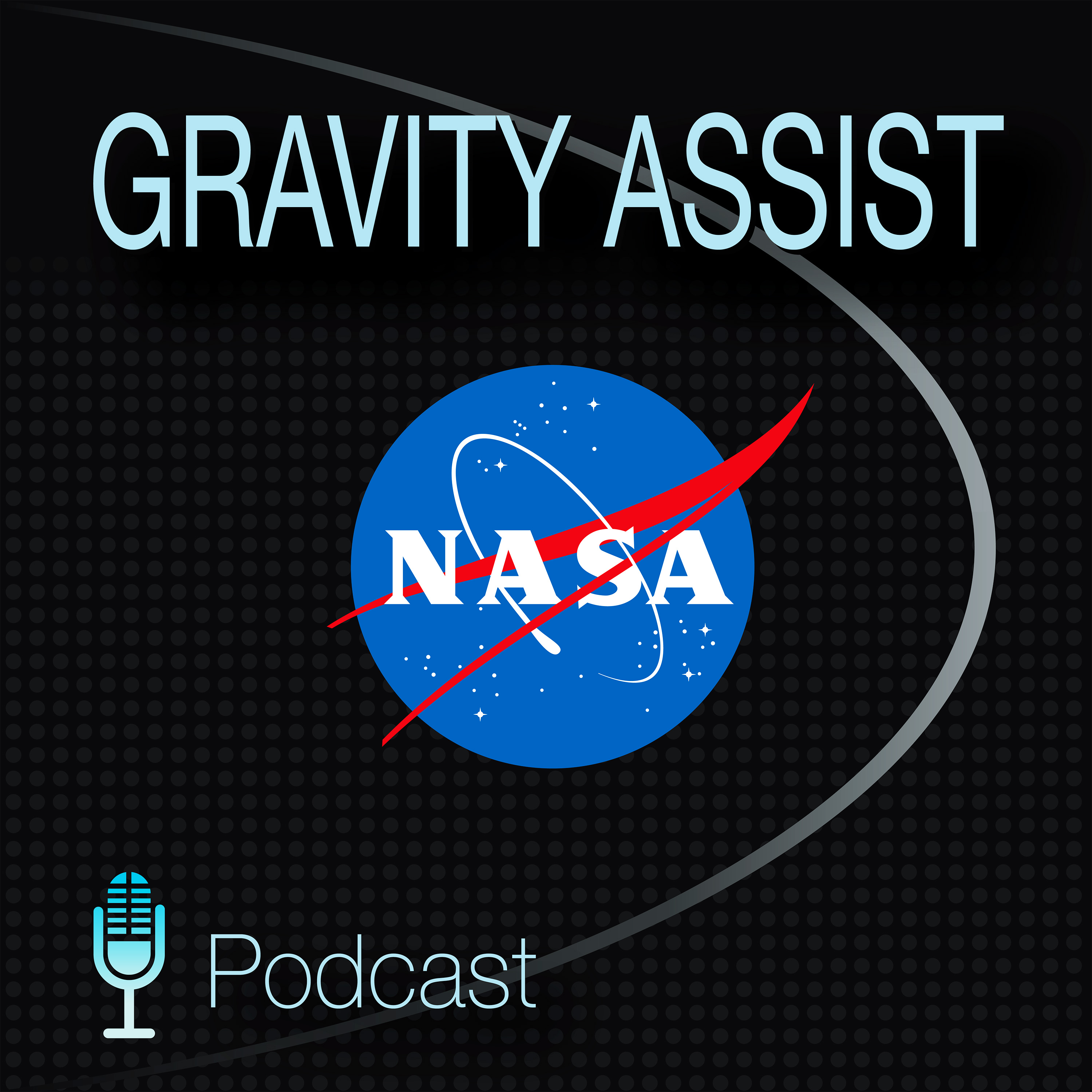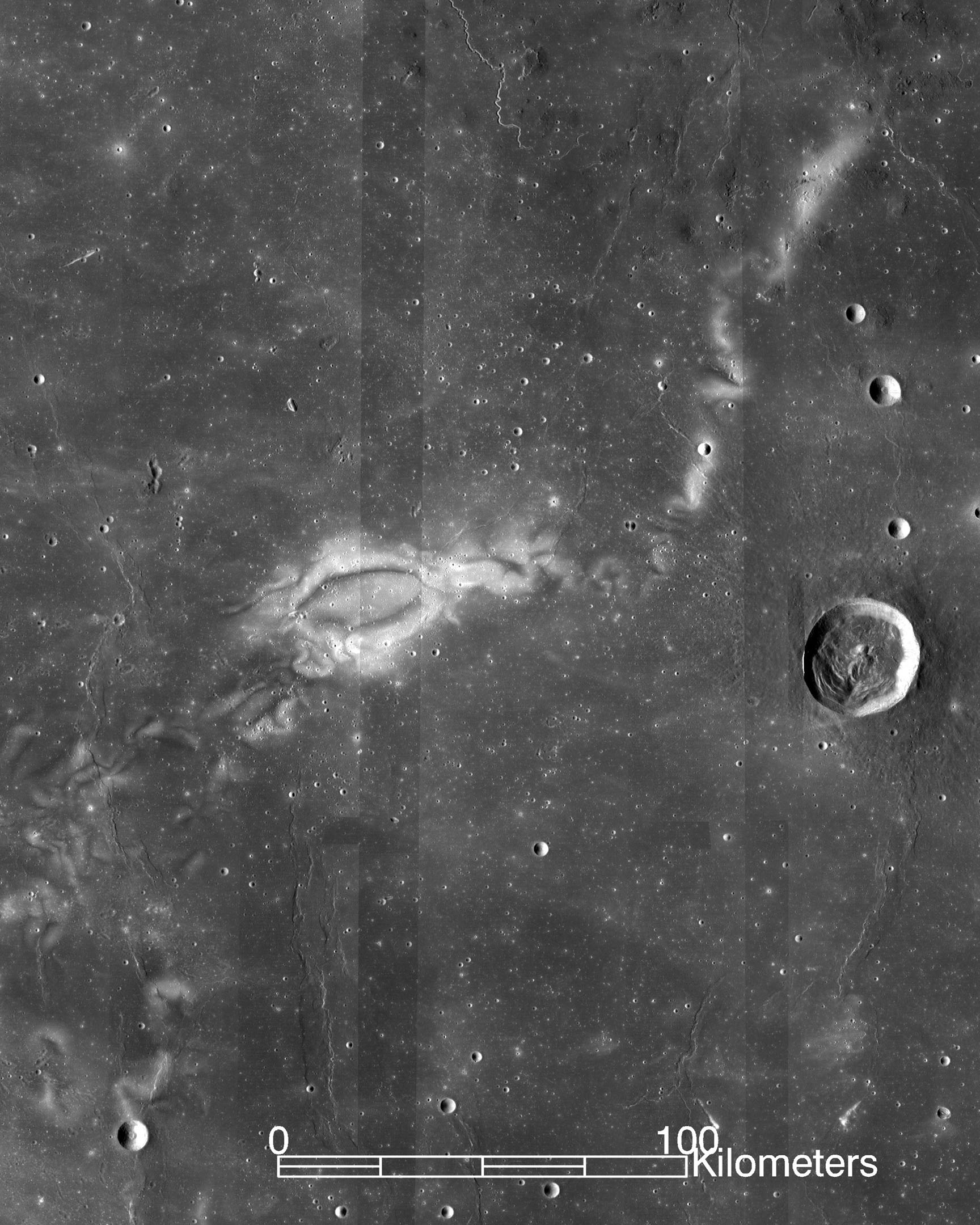
From lunar samples brought back in the Apollo program, scientists have figured out that the Moon once had a shield around it called a magnetosphere, just like the Earth has today. As NASA prepares to send humans to the Moon, and eventually on to Mars, scientists are exploring the Moon’s magnetic past.
Jim Green:Did you know that Earth is like a giant magnet? Our planet has a special shield called a magnetosphere that protects us from harmful radiation from the Sun. Now, the Moon is not so lucky – it doesn’t have a magnetosphere, at least not today. But scientists are learning that, billions of years ago, the Moon may have had a magnetic field just as strong as ours. What happened to it? Let’s find out.
Jim Green:Hi, I’m Jim Green, Chief Scientist at NASA and this is Gravity Assist. This season is all about the Moon.
Jim Green:With me today is Dr. Sonia Tikoo, an assistant professor at Stanford University. Sonia is a planetary scientist whose specialty is paleomagnetism. Welcome, Sonia.
Sonia Tikoo: Thanks for having me.
Jim Green: Well you know, I’m a magnetospheric physicist and there isn’t a magnetic field I don’t love. But as a paleomagnetism person, what do you do? How do you study these things?
Sonia Tikoo: What a paleomagnetist does is we study the ancient magnetization that is preserved in rocks. So whenever rocks form, if there is a magnetic field present at that time, rocks will record both the intensity as well as the direction of the field at the time that they formed. And so what we do as paleomagnetists is we take rock samples into the lab and we measure them on magnetometers and we extract that magnetic information that’s recorded in the rocks. And then we use that to study the history of magnetic fields on planetary bodies — either on the Earth or on the Moon or any other planetary body that we can get rocks from.
Sonia Tikoo: Magnetic fields are actually pretty important for protecting planetary atmospheres. So, charged particles and radiation from the solar wind can break apart atmospheric gases. And what the magnetic field does, is it traps some of those particles along the magnetic field lines and diverts them away either around the Earth or towards the poles into a specific location.
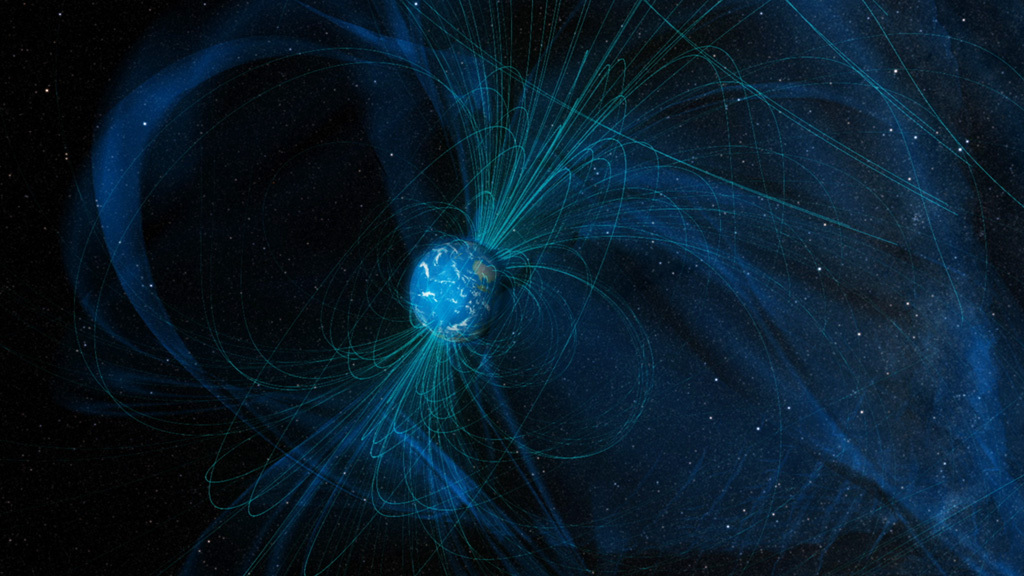
Sonia Tikoo: And so it’s a shield. It’s this invisible shield around our planet and it helps us retain our atmosphere for longer amounts of time. In contrast, Mars used to have a thicker atmosphere than it does now and we think that part of the reason Mars became inhospitable was after its magnetic field died, the solar wind was able to strip away the water in its atmosphere. And so Mars slowly lost its water, it became inhospitable and it is the sort of barren world that it is today.
Jim Green: Well, you know the discoveries that came from Apollo, that the Moon had a magnetic field, how did you guys figure that out?
Sonia Tikoo: Yeah. So this was actually a multiple stage process. Actually before Apollo, the Luna spacecraft flew by the Moon and discovered that the Moon did not currently have a magnetic field. And then later the Apollo astronauts actually took a magnetometer to the Moon. And the first time they did that was on Apollo 12 and they plunked this big magnetometer down and they measured the surface field on the Moon and discovered that it was not zero, but it was a thousand times weaker than the Earth’s magnetic field is today.
Sonia Tikoo: So what this tells us is the Moon does not currently generate a magnetic field, but there was some magnetic memory of an earlier era preserved in the rocks at the lunar surface. And that’s what they were measuring. But in order to fully understand that, we actually had to bring rock samples back from the Moon and study them in labs to extract the magnetization that was inside the rocks.
Sonia Tikoo: And so thankfully the Apollo astronauts brought back a ton of samples and the earlier Apollo era generation of paleomagnetists went to town and measured a bunch of them and discovered that some of them were actually quite strongly magnetized and if those actually formed in the presence of a lunar magnetic field, that would mean the field was as strong as the Earth’s is today before three and a half billion years ago. So, we’ve been trying to work on them for a long time and confirm that initial hypothesis. And I think we’ve been able to do that recently.
Jim Green:Well, this is one of the really great things about samples. From a scientific perspective, I keep saying the samples are a gift that keeps on giving because as we understand them more, we can go back and look at those and tease out more and more information. And that’s what we’re doing all the time. Now when you talk about magnetic memory in a rock, what physically is really happening?
Sonia Tikoo: Yeah. What’s really happening is inside a rock, let’s say a lava rock, like a basalt, that rock, whenever it forms, it creates minerals inside the rock that are capable of preserving magnetism. On Earth, the most common mineral is magnetite. But on the Moon, because we don’t have oxygen around to oxidize iron, we have just metallic iron grains in the rock.
Sonia Tikoo: So, what’s physically happening is that you basically have alignment of electron spins inside these metal grains that are causing the magnetic moment of individual grains to align with whatever magnetic field is present at the time the rock forms. And then that gets frozen in as the rock cools below a critical temperature. That’s called the Curie temperature. And for Moon rocks where the magnetic carrier is metallic iron, that’s 780 degrees. So once a lava rock cools below 780 degrees, it will lock in its magnetism permanently.
Jim Green: Now, as you said, Apollo brought back an enormous amount of rock material and regolith and soils and other things from the Moon. But indeed about 840 pounds or so was brought back and we haven’t looked at all of them. But you mentioned that some are more strongly magnetized than others. Why is that?
Sonia Tikoo: Yeah, so there’s two ways that can happen. One way is simply that the Moon’s magnetic field was stronger at different times in the past than it is at other times in the past. So what we’ve found from measuring lunar samples of different ages is around 3.85 to 3.5 billion years ago, the Moon’s field was about the same strengths as the Earth. And then by 3.3 billion years ago, we find that the lunar field was at least five to 10 times weaker. And we’ve been able to infer that from measuring the intensity of magnetism in the samples.
Sonia Tikoo: Then there’s this other possibility, which is distinct from the intensity of the ancient field, but it’s also that some rocks contain more iron than other rocks. And then the more iron there is in a rock, the stronger the magnetization may be. But we are able to, in the lab, discriminate between there being a higher iron content and between the field intensity being greater at different points in time using a variety of experiments. So we can figure out what’s actually happening inside each rock individually.
Jim Green: Now, of course, what’s happening is that magnetic field is coming from inside the Moon. So, how do we generate a magnetic field deep inside a body?
Sonia Tikoo: So, magnetic fields are generated from organized motion of liquid metal within the cores of planetary bodies. And so you have all this molten iron that’s churning around and it’s essentially like a current loop. And if you have a current loop, you have a magnetic field generated from that loop. And so you have lots of current loops as you’re moving around this fluid in the core. And what is driving that fluid motion can be a number of things.
Sonia Tikoo: The Earth’s magnetic field is generated by thermo-chemical convection. So, it’s heat loss out of the core coupled by the buoyancy of light elements that are alloyed in with the metallic iron in the core moving upwards while heavier, just pure metallic iron is freezing out and forming a solid inner core at the center of the planet.
Sonia Tikoo: And so this may have been happening on the Moon too. But actually what’s kind of fun is it doesn’t seem to be enough to generate the strength of the lunar field that we have inferred from the Apollo samples. So, one of the cool outcomes of lunar magnetism is we’re thinking about other ways that cores can generate magnetic fields, and some of them are mechanical in nature rather than convective and thermally related.
Jim Green: Wow. I didn’t know that. You had mentioned that the Moon lost its magnetic field, but you got these currents inside the core and that field goes right through the mantle and through the crust and out into space and then it becomes less and less over time. So how do you lose that?
Sonia Tikoo: Ultimately what ends up happening is the core runs out of thermal energy that’s needed to sustain the motion of the liquid metal.
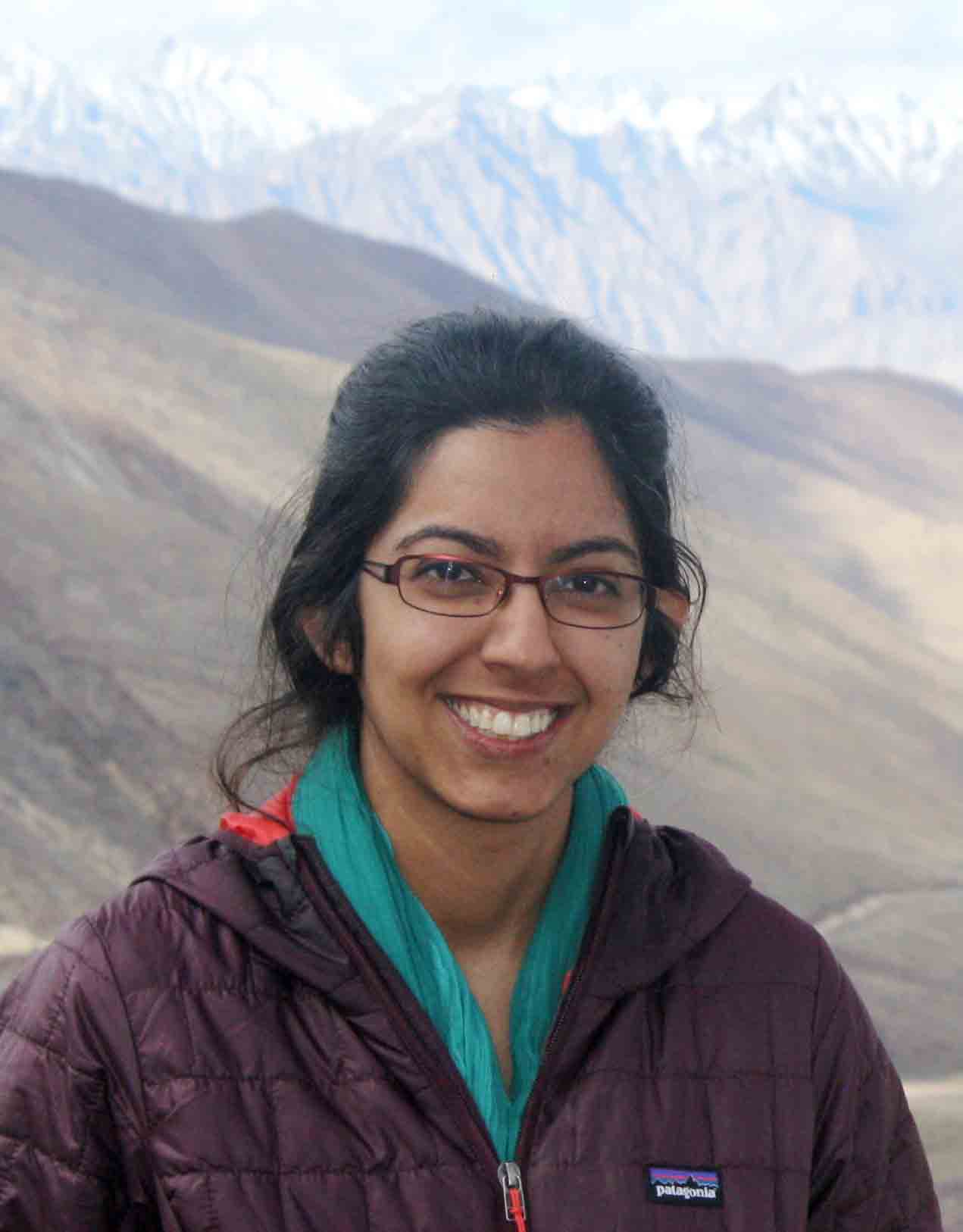
Sonia Tikoo: In the past the Moon was a lot closer to the Earth than it is today. And so it’s possible that the Earth’s gravitational pull on the lunar mantle was causing the mantle to sort of wobble differently from the core, and that stirred up the core, almost like swishing a coffee cup full of coffee. So, you’re swishing the outer cup and it’s making the liquid inside move around. And so, as the Moon moved away from the Earth, it’s possible that that effect of the Earth’s gravity on the lunar mantle was getting weaker and weaker over time, and that might have also caused the Moon to run out of juice for a dynamo magnetic field.
Jim Green: Now you had mentioned indeed that the Moon lost its magnetic field, but what’s really new and exciting to me is that you had also figured out that it is at least a billion years later than we originally thought when the Moon lost the field. How did you figure that out?
Sonia Tikoo: During the Apollo era, we had a lot of evidence that there was a strong field on the Moon until at least three and a half billion years ago. But then after that, it was kind of a mystery. There were some weakly magnetized rocks, and we didn’t know whether their magnetic signatures were some kind of noise or whether they were true signals.
Sonia Tikoo: So what I did was I measured a young lunar sample that is younger than all of the volcanic rocks that were brought back from the Moon. So, it’s actually a rock that was formed from an impact that happened sometime after 2.5 billion years ago. So it’s relatively young in Moon speak. And this impact melted a bunch of particles at the lunar surface and recrystallized. And so what we did was we measured the glass of this lunar impact melt rock, and we were able to determine that at the time this impact melt formed, there was a dynamo active on the Moon at that period in time.
Sonia Tikoo: And it had a weaker field than what we’d observed earlier in lunar history. So earlier in lunar history, we may have had a field around 50 micro Tesla, which is the same strength as the Earth’s is today. And then my rock from a 2.5 billion years ago, or younger, had a five micro Tesla field. So, that was really cool. So what we’re trying to do now is we’re trying to fill in the gaps in the lunar paleomagnetic record. And, a lot of people around the world in different paleomagnetism labs now are starting to chip away at this problem by going through the Apollo samples and trying to identify ones with other ages to figure out what happened in between and when did the field actually die.
Jim Green:So this, this kind of research is tremendously exciting because it tells us that these bodies, our solar system bodies or planets or Moons, are evolving over time. We take for granted that in our meager lifetime of less than a hundred years, that we experience everything that’s going on. And that’s just not the case. These big, huge bodies evolve.
Jim Green:So one of the things that have happened in terms of understanding the Moon is the origin of the mare. And so at about 3.8 billion years or so, huge objects began to hit the Moon and create these huge craters. And if they’re 300 kilometers or so in size, we call them basins. And this allowed magma to come in after you blew away most of the crust and start filling them in. And these mare are some of those rocks that you’re talking about, because then they solidify and create that magnetic structure.
Jim Green:But something neat, also, we believe happened with the mare and that was: when they were filling in these huge basins with lava, the Moon outgassed and may have created an atmosphere.
Sonia Tikoo: Yeah, that’s really cool.
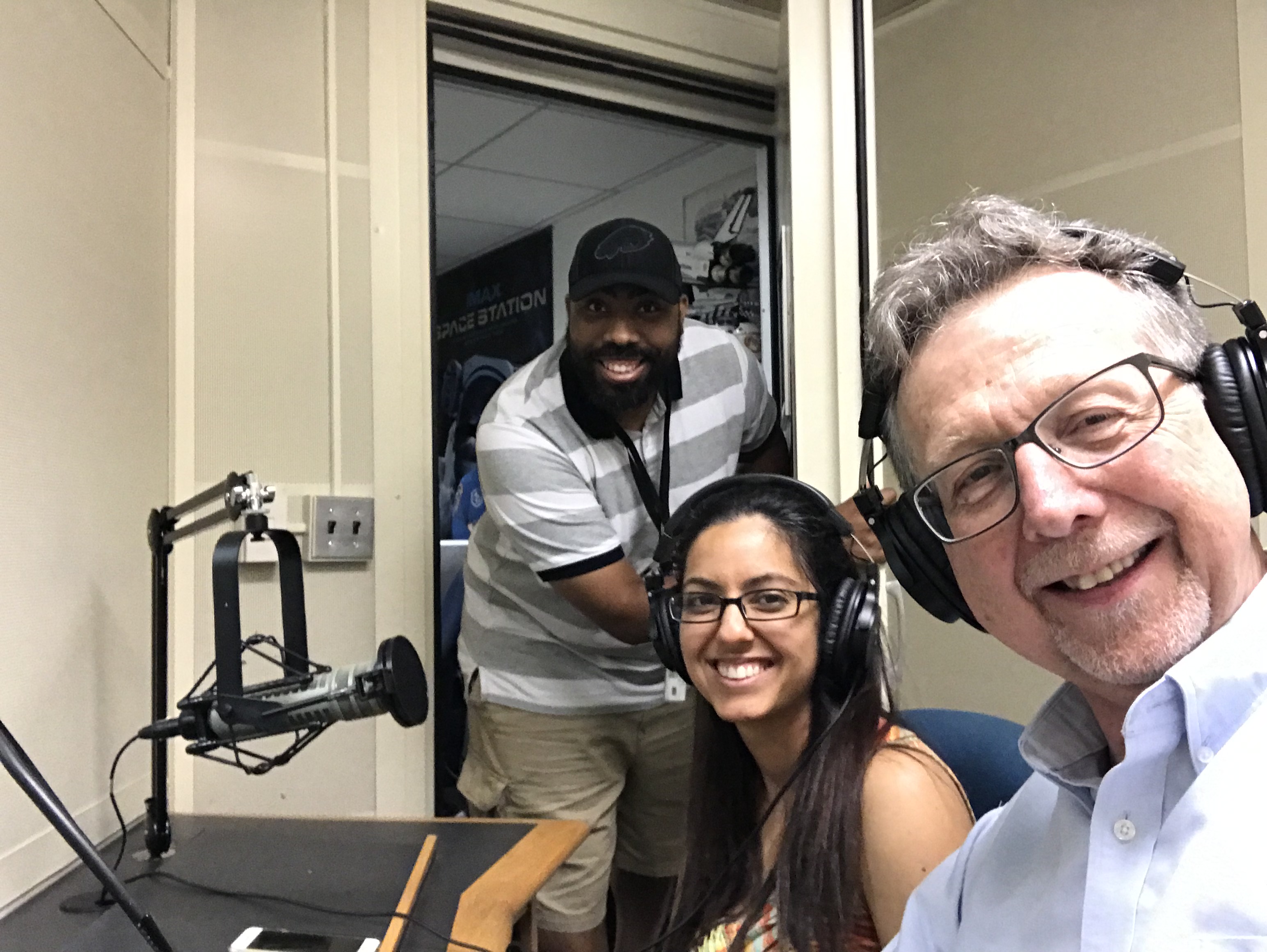
Jim Green: Yeah, I mean, now that’s a whole new concept of the Moon with an atmosphere. Now that makes it more Earth-like. But once again, this is during the time that the Moon had a magnetic field.
Sonia Tikoo: So in terms of the Moon now we can actually think more about the role that magnetism may have played in preserving this early atmosphere. So you might’ve had some of atmospheric gases form and implant water into different areas on the Martian surface and we still see traces of some of that water today in permanently shadowed regions within craters. And maybe the field could have played a role in helping protect that.
Jim Green: Yeah, that’s just a fantastic idea. You know, if the Moon did have an atmosphere at one time and it was outgassing, in which it would out gas water, it would out gas CO2, other things that we call volatiles. And then because that atmosphere actually has its own motion associated with it, it will move a lot of these volatiles to the colder regions and then snow out.
The concept of snow coming from a lunar atmosphere contributing to the water in these permanently shadowed craters in the North and South Pole is just the radical new idea that’s going on. And then combining that with the effect of a magnetic field, helping protect that, that conjures up a whole new vision of what that might look like for those species on Earth looking up at the Moon. It would be quite a sight.
Sonia Tikoo: Well, we’re going to be keeping ourselves busy for the next decades trying to understand this. But that’s what I love about being a scientist.
Jim Green: Yeah. Now what I said may be true, but it may have some problems associated with it. But indeed, science marches on and we’ll continue to tease that out. But these are some of the latest and new ideas on what the Moon may have looked like way back when.
Jim Green:Well, you know, not only do the rocks, as you said, when we brought them back in the Apollo and we can tease out the magnetic field. But there’s some orbital observations from LRO [The Lunar Reconnaissance Orbiter] that look at some really weird features on the Moon that may indeed be associated with magnetic fields. They’re called swirls. What do we know about them?
Sonia Tikoo: Basically lunar swirls are these very enigmatic markings on the lunar surface. They look like bright white, painted-on brush strokes right at the surface and there doesn’t seem to be any correlation between their occurrence and the local geology. They just drape over multiple features, or just in boring lava planes that are not different than the surrounding regions. And, we don’t know exactly why they’re there.
Sonia Tikoo: We have some hypotheses. One thing that is known about swirls is that most of them are located at the same places that the Moon has really, really strong crustal magnetic anomalies. So a magnetic anomaly is just a region where the crustal magnetism is anomalously stronger than it is in other regions on the lunar surface.
Sonia Tikoo: And so what we’re trying to do now is figure out, okay, what is actually causing the swirl areas to be so magnetic? And so there are a bunch of different hypotheses ranging from buried impact melt sheets that might have extra iron in them from the asteroids that would’ve hit the Moon. We have other ideas like anomalously iron rich dikes that are intruding into the lunar across from below or even comet impacts amplifying magnetic fields right at the lunar surface and creating magnetism.
Sonia Tikoo: So there are a lot of different ideas floating around for what makes things so magnetic. And then what actually creates the swirl, if it is indeed controlled by the magnetism, which it does appear to be, is this idea that — it ties into what we talked about just now with the atmosphere. Magnetic fields can deflect the solar wind. And so the idea is that a strongly magnetized rock in the subsurface of the Moon can deflect the solar wind in the pattern of the magnetic field geometry and make it fall away from certain regions.
Sonia Tikoo: So you’re going to have preferential space weathering of regions that are not protected by the magnetic field. And then places that are protected by the magnetic field are going to look white because that is pristine lunar surface that has not been darkened by interaction with particles.
Jim Green: So the solar wind actually changes the surface chemistry of these rocks and if you can prevent it from hitting the lunar surface, then you’re going to keep that pristine, as you say, color of the soils. And that contrast is really spectacular when you look at the images from LRO over the swirls. That’s an absolutely fantastic subject that we really need further study on. We want to go to these places and obtain new samples in these areas and bring them back to resolve what indeed creates the swirls.
Jim Green: Sonia, I’ve really enjoyed having you here and talking about some of the things that are new and exciting about the Moon. But you know, I always love to ask my guests they’re must have been something to happen in their past, a person, place, or thing, activity, that really gave them a gravity assist, changed their directions, accelerated them forward to become the scientists they are today. So Sonia, what was your gravity assist?
Sonia Tikoo: When I was growing up, I always had a passing interest in space and astronomy. But I didn’t really know that you could make a career out of it. And I went to college at Caltech, which was quite a shift for me. I came from a small town in Missouri and moved to California. My freshman year at Caltech, I saw all these other students getting involved with research very early on. I was like, “Wow, I want to do that too.”
Sonia Tikoo: And so I got what’s called a summer undergraduate research fellowship to work at JPL [NASA’s Jet Propulsion Laboratory] and I was actually designing these microfluidic devices to do chemical testing of Martian soils. It was this prototype instrument that would have gone on the ExoMars rover. But what I did learn when I was doing this internship was that I was actually less interested in how the device worked and more interested in learning about the possibility of amino acids and hydrocarbons in the Martian soil.
Sonia Tikoo: And I realized I want to work on planets, you know? So I immediately discovered that I was a scientist during that internship. And so I immediately changed my major to geology very abruptly. And I’d never even been camping before. So you can imagine that this was quite a radical transformation in myself. But you know, I fell in love with rocks. I fell in love with planets. And I think it was that pivotal moment at JPL that changed my life.
Sonia Tikoo: I liked the rocks.
Jim Green: And they tell us a lot. They’re so important. So going back to the Moon is a wonderful opportunity for us to be able to obtain the right samples and really tease out the next level of understanding of the Moon. And I can guarantee you, just from the tantalizing things that we talked about today, we have just begun to realize how exciting the Moon in its evolution is. Well, Sonia I’ve really enjoyed having you here. Thank you so much for coming in and talking about your gravity assist and the science you do.
Sonia Tikoo: Thank you so much for the invitation. I really enjoyed this conversation.
Jim Green: Well, join me next time as we continue our exploration to the Moon. I’m Jim Green and this is your “Gravity Assist.”
Credits:
Lead Producer: Elizabeth Landau
Audio Engineer: Emanuel Cooper



























